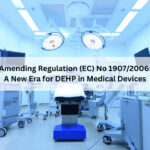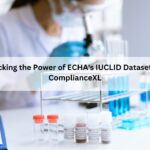Any business that sells electrical/electronic products, sub-assemblies or components directly to EU countries, or sells to resellers, distributors or integrators that in turn sell products to EU countries, are required to comply with EU RoHS Directive
The European Commission published the first RoHS Directive 2002/95/EC on the restriction of the use of six hazardous substances in electrical and electronic equipment (EEE) is referred to as RoHS 1 and the recast Directive 2011/65/EU is referred to as RoHS 2.
The Commission published the RoHS 2 delegated directive 2015/863 on 04 June 2015 by adding 4 phthalates to the list of restricted substances in Annex II to Directive 2011/65/EU (RoHS 2). All EEE manufacturers should comply with the RoHS recast requirements by 22 July 2019, except for medical devices and monitoring and control instrument manufacturers, for whom the compliance deadline is 22 July 2021.
Major features of the RoHS 2 recast are:
- Addition of low molecular weight Orthophthalates: DEHP, BBP, DBP, DIBP restricted at 1,000 ppm in homogenous materials
- The restriction of phthalates DEHP, BBP, DBP and DIBP shall not apply to cables or spare parts for the repair, reuse, updating of functionalities or upgrading of capacity of EEE placed on the market before 22 July 2019
- The restriction of phthalates DEHP, BBP and DBP shall not apply to toys which are already subject to the restriction of DEHP, BBP and DBP through entry 51 of Annex XVII to Regulation (EC) No 1907/2006 (REACH).
- Manufacturers must ensure that EEE are CE marked and must prepare a declaration of conformity confirming that they have complied with the regulations. The general principles of CE marking are outlined in Regulation 768/2008/EC.
Below are the broad categories of EEE that are covered under the RoHS 2 recast
| RoHS 2 is applicable to these categories | Categories exempted from RoHS 2 |
|---|---|
|
|
(EEE is defined as any equipment with a voltage rating not exceeding 1,000V for AC and 1,500V for DC that requires electric currents or electromagnetic fields to work, or equipment used for the generation, transfer and measurement of electric currents and fields. EEE can be a component or assembly used in a finished product. Cables and spare parts for repairing, reusing, updating or upgrading a product are all EEE.)
Do you want to learn more about how to comply with the RoHS 2 recast before the deadline? Talk to the compliance experts at ComplianceXL.






